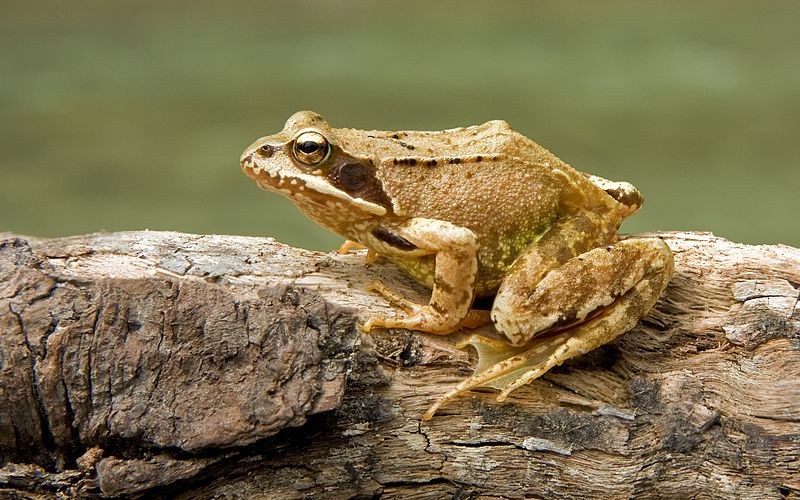Refrigerators that Ribbit?
For many, milk is a dietary staple. It pairs well with cereal, is good in coffee, and many drink it straight. (Many also find that gross, but that’s another story.) But no matter how you use it, you probably all store it the same way: in the refrigerator. Milk needs to be stored at under 40 degrees Fahrenheit (4 degrees Celsius) before it begins to spoil. And spoiled milk, beyond being a foul-smelling mess, can get you quite ill.
But what do you do if your fridge doesn’t work? Or if you don’t have a fridge to being with? What if refrigeration wasn’t even invented yet?
Maybe you can use a frog.
Yeah, one of these guys.

That’s a European common brown frog, which, as the name would suggest, is common throughout Europe. Well, mostly. You won’t find them in the Iberian peninsula, but these frogs are often seen as far east as central Russia. And according to Russian folklore, these frogs weren’t just hopping around during medieval times. Legend has it that they also offered a refrigeration-like level of preservation when it came to milk. As Treehugger reports, “if you really need to preserve milk in a lengthy blackout, for example, you could try the old Russian and Finnish trick of dropping in a live frog. People in Russia and Finland did this for centuries before modern refrigeration, and the technique reportedly survived into the 20th century in some rural areas.”
That sounds gross — who wants to drink from a frog’s milk bath? — but let’s put that (and whatever diseases the frog introduces to the milk) aside. Because while this sounds like a terrible idea, it may actually work.
Milk spoils because of the bacteria naturally found in it. In modern times, pasteurization kills off most of that bacteria, and refrigeration slows the remaining strains from replicating. But in absence of this — or even with these measures, but with enough time — the bacteria is going to win. As Mel Science explains, the bacteria “start to multiply, transforming lactose into lactic acid. As a result, the acidity of the milk increases, which in its turn causes the protein to fold and liquid to separate into whey and a viscous mass.”
According to the folklore, putting a frog in your milk was akin to putting ice in it — the cold frogs helped keep the milk cold. That, of course, is nonsense. But refrigeration isn’t the only way to prevent those bacteria from multiplying. And frogs may actually perform a similar function — even if they aren’t cold. In 2010, researchers in the United Arab Emirates “identified more than 100 antibiotic substances in the skins of different frog species.” In other words, when medieval Russians put frogs in their milk, they were adding antibiotics to the mix in the form of frog slime. And that icky layer of frog gooeyness helped the milk stay fresh.
While, in modern times, no one is recommending tossing Kermit into a milk bath, there may be a not-gross application for the frog-in-milk discovery. As NPR reported in 2012, “one group of scientists led by a Russian chemist is trying to break down this frog goo at a molecular level. The researchers have found compounds they hope will lead to new medicines.” After all, the goo helps protect the frogs from microscopic invaders, maybe it can help us, too.
Bonus fact: In 1994, as NRP reported, “a freshman at MIT needed some milk to make mac and cheese. But he got distracted, didn’t make the mac. And he stuck the unopened quart carton of milk in his dorm fridge and promptly forgot all about it.” Normally, that would just lead to a quart of milk going into the trash. But for reasons unclear and potentially unwise, instead of throwing it away when it was discovered ten months later, the students kept it — and then threw it a birthday party a few weeks after that. Today (as of 2019, when that NPR report hit), the milk — known as “The Milk” on campus — is still around, serving as a de facto mascot for the dorm it “lives” in. It isn’t in its original carton, though; per NPR, at one point, it “ate through the cardboard carton and had to be housed in its very own biocontainment vessel.”
From the Archives: Why We Pour Milk on our Cereal: It has to do with the devil, kind of.
